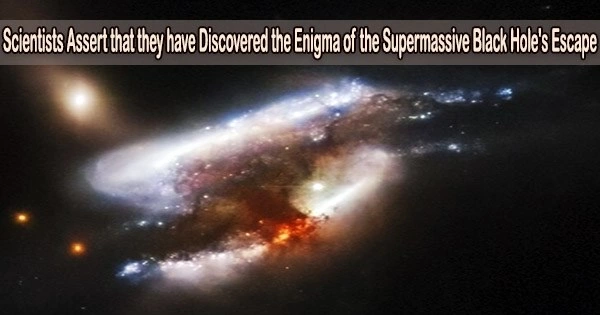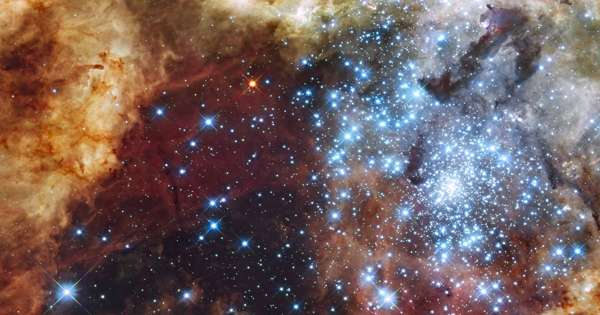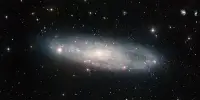A difficulty for several research teams has been a strange trail of stars that the Hubble Space Telescope just uncovered and originated eight thousand million years ago. Its vastness is comparable to the Milky Way’s, and the genesis of this extremely long, narrow structure has been the subject of numerous theories.
This star trail may be the result of a supermassive black hole passing through a gigantic cloud of gas, according to a contentious first theory. Because it requires a broad range of intricate unique conditions, this concept immediately captured the attention of the astronomical community. For this reason, other research teams have been looking into various, less unlikely explanations for the observations.
In a recent study published in Astronomy & Astrophysics, researchers at the Instituto de Astrofísica de Canarias (IAC) have reached the conclusion that this unusual structure of stars could be interpreted as a galaxy without a bulge seen edge-on. Galaxies of this type, also called thin or flat galaxies, are relatively common.
“The motions, the size, and the quantity of stars fits what has been seen in galaxies within the local universe,” explains Jorge Sanchez Almeida, an IAC researcher who is the first author of the article. “It’s a relief to have found the solution to this mystery; the new proposed scenario is much simpler. In one sense it is also a pity, because the existence of fleeing black holes is expected, and this could have been the first one to be observed.”
It is an interesting object, because it is quite a large galaxy at a very large distance from Earth, where the majority of the galaxies are smaller.
Ignacio Trujillo
The scientists compared the puzzling structure with a well-known local galaxy without a bulge, IC5249, which has a similar mass of stars, and found startling agreement to support the notion of the interpretation in terms of a galaxy.
In the words of Mireia Montes, an IAC researcher who is a co-author of the article, “When we analyzed the velocities of this distant structure of stars, we realized that they were very similar to those obtained from the rotation of galaxies, so we decided to compare a much closer galaxy, and found that they are extraordinarily similar.”
“We also looked at the relation between the mass of the assumed galaxy and its maximum velocity of rotation, and discovered that indeed it is a galaxy which behaves like a galaxy,” states Ignacio Trujillo, an IAC researcher who took part in the study.
“It is an interesting object, because it is quite a large galaxy at a very large distance from Earth, where the majority of the galaxies are smaller,” he adds.
















